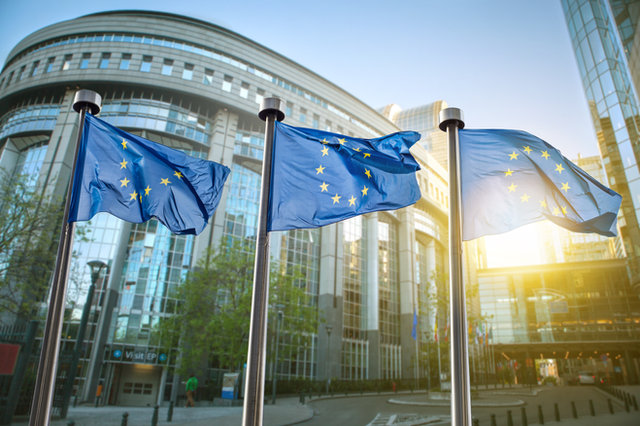- January 4, 2023
- Posted by: Anish
- Category: Feed

European Union policy makers reached a landmark deal to slap an emissions levy on imports, in an attempt to ensure the bloc’s green overhaul doesn’t leave its industries at a disadvantage.
The European Parliament thrashed out key details of the so-called Carbon Border Adjustment Mechanism (CBAM). The idea is that carbon-intensive industries forced to comply with Europe’s world-leading climate laws won’t face unfair competition from producers operating in countries with weaker rules.
‘EU will lead on the connection between climate and trade policies’
The EU’s plans have already caused diplomatic unease in nations such as China and India. The measure effectively means that goods imported into the EU from a high-polluting country will face a levy at the border based on its emissions footprint. The proceeds will largely go into the EU’s budget.
From 2026, for the chosen sectors of cement, fertiliser, iron and steel, electricity and aluminium, imports will face an additional tariff in so far as the country of source does not exact an equivalent price for the carbon embedded in them.
This will negatively impact the Indian industry which has significant export interests in the EU. The EU has been the destination for nearly 17 per cent of total Indian exports in the period of 2012-2021. Around six per cent of these exports will fall under the purview of the CBAM. Of these CBAM-implicated Indian exports, the iron & steel sector, followed by aluminium will be the most affected. Should CBAM expand beyond these five sectors, it will next seek to cover organic chemicals, plastics, polymers and hydrogen.
Should CBAM open the pandora’s box of carbon border measures, others, especially the US and Canada may follow suit. This makes sense in light of highly ambitious carbon neutrality commitments undertaken by over 70 countries, including the biggest emitters – China and the US.
Crucially, over 2,000 companies globally have put in place targets to achieve net zero carbon emissions. These include 35 Indian companies engaged in sectors such as construction, electric utilities, mining, textiles, automobiles and chemicals among others. There is also a general acceptance of Internal Carbon Pricing (ICP) by various Indian businesses, indicating an openness towards adapting to a low carbon future. Thus, even as business and governments, especially from the developing countries register their protest against green protectionism, many of them are simultaneously and pragmatically adapting to the upheaval that greening of supply chains will bring to current levels of competitiveness.
The related issue of coherence comes with an opportunity. Case in point, even though India has not explicitly set a carbon price, several governmental initiatives indirectly tax or put a price on carbon. These include government schemes like Perform, Achieve and Trade (PAT) (rewarding/penalising industrial sectors for achieving/failing to reduce energy consumption per government-mandated targets); Renewable Purchase Obligations (specifying the minimum quantity of electricity to be purchased by distributors from renewable energy sources) and the GST compensation cess on coal.
In sum, if Indian businesses desire to integrate themselves into global value chains and the future trading order that will be driven by a critical mass of countries riding the green wave, they must pro-actively study and engage in discussions on carbon measures with relevant stakeholders.
